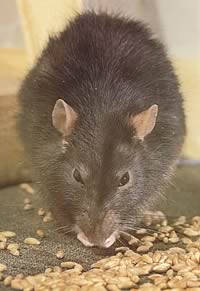 |
|||||||||
|
|||||||||||||||||||
|
|
Think
Wildlife Encourages Responsible Rodent Control 29/11/05 Threats of a severe winter, with the first signs emerging this month, will drive rodents indoors to seek food and warmth. This will call for rigorous control programmes to avoid feed contamination and damage to equipment.
But at the same time, members of the industry-led Campaign for Responsible Rodenticide Use (CRRU) are encouraging those involved to follow guidelines on the use of rodenticides to ensure an effective programme while at the same time minimising any risk to wildlife. "We have no evidence that our current use of rodenticides affects wildlife populations, but we do know that residues have been found in some non-target species," says CRRU chairman and independent consultant Dr Alan Buckle. "It is important that users of these products follow strict guidelines to ensure that wildlife is not at risk through any poor practice." Established earlier this year by the major manufacturers and marketers of anticoagulant rodenticides, and with advice from leading experts from professional organisations such as English Nature and the Health and Safety Executive, CRRU guidelines focus on seven key points. Promoted under the Think Wildlife banner, the key points are: Always have a planned approach Always record quantity of bait
used and where it is placed Always use enough baiting points
Always collect and dispose of rodent bodies Never leave bait
exposed to non-target animals and birds Never fail to inspect
bait regularly Never leave bait down at the end of the treatment
"As the weather gets colder and food supplies are scarce
in the fields, rats and mice will migrate into buildings," adds
Dr Buckle. "But so will some wildlife species like the polecat.
The collection of dead rodent bodies during the campaign is essential
because if they are picked up by polecats, or birds of prey like
red kites, it can result in secondary contamination. Protecting
baits from non-target species and removing them at the end of
the treatment is also essential to minimise wildlife exposure." "Likewise, users must cover bait points correctly and make sure they are never left down at the end of the treatment to avoid exposure of wildlife."
| ||||||||||||||||||

|
|
||||||||||||||||||
| home | agri-services | pedigree
pen | news | dairy | beef | machinery BPS | property | organisations | site map |
|||||||||||||||||||
